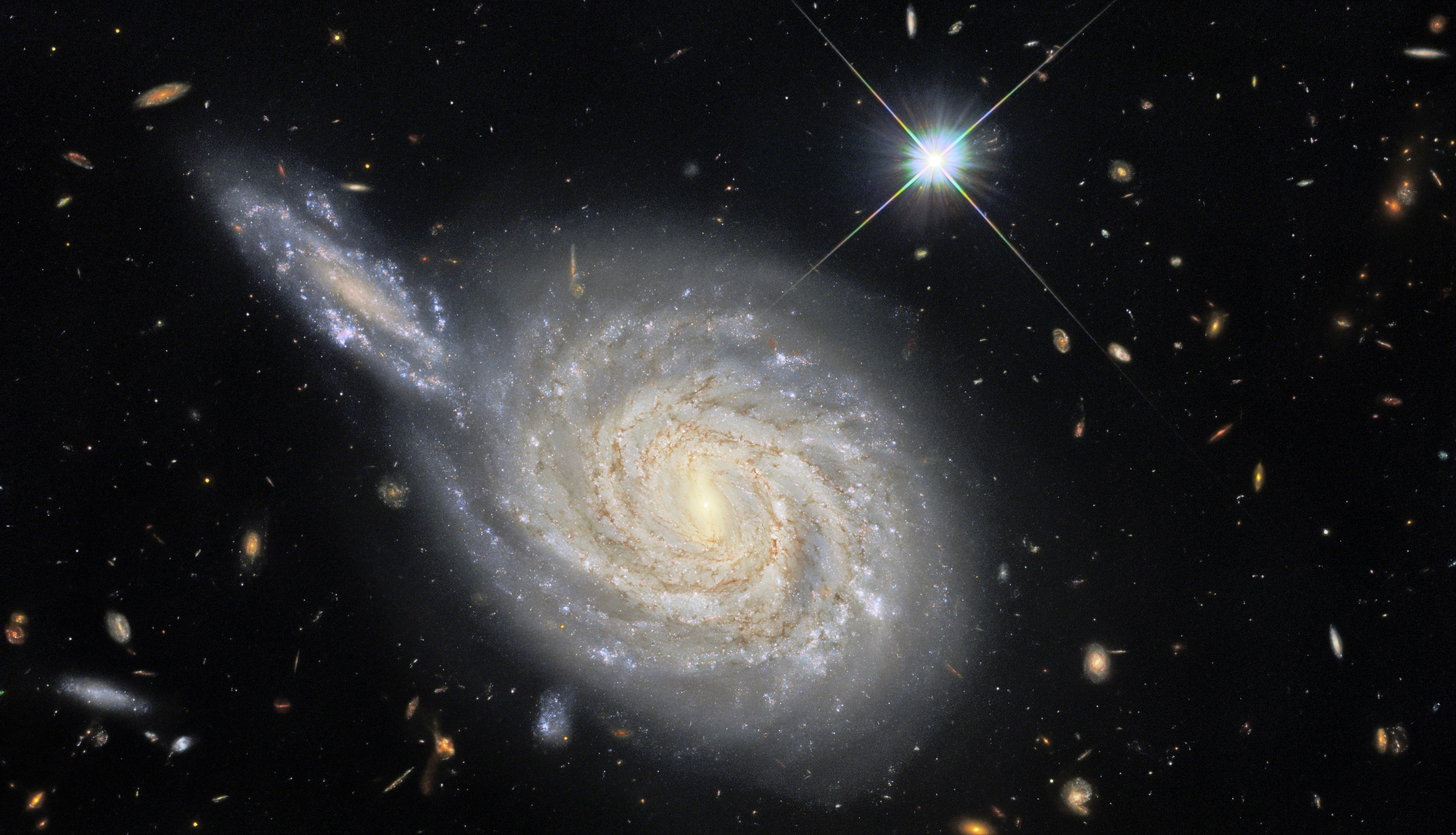
Galactic Conjunction
This spectacular image from the Hubble Space Telescope captures the spiral galaxy NGC 105, which lies roughly 215 million light-years away in the constellation Pisces. While it looks like NGC 105 is plunging edge-on into a neighboring galaxy, this is just a circumstance of perspective. NGC 105’s elongated neighbor is actually far more distant. Such visual associations are the result of our Earthly perspective and they occur frequently in astronomy. Hubble’s Wide Field Camera 3 observations in this image are from a vast collection of Hubble measurements examining nearby galaxies that contain two fascinating astronomical phenomena – Cepheid variable stars and cataclysmic supernova explosions. While these two phenomena may appear unrelated – one is a peculiar class of pulsating stars and the other is the explosion caused by the catastrophic death of a massive star – astronomers use both to measure the vast distances to astronomical objects. Both Cepheids and supernovae have very predictable luminosities. Astronomers use these so-called “standard candles” to determine distances by comparing how bright these objects appear from Earth to their actual brightness. NGC 105 contains both supernovae and Cepheid variables, giving astronomers the opportunity to calibrate the two distance measurement techniques against one another. For more information, visit: esahubble.org/images/potw2201a/
